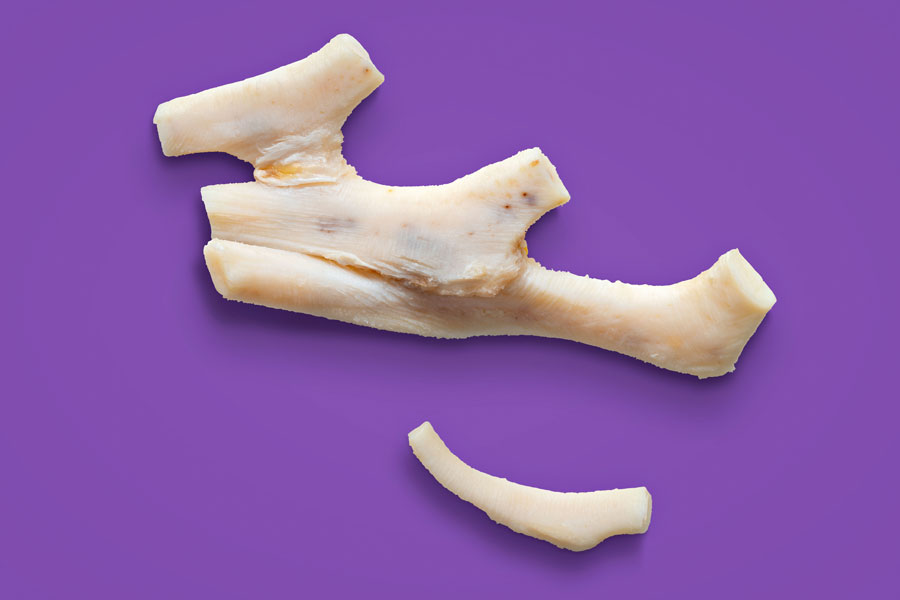Costal cartilage, a vital component of the human anatomy, is not merely a structural element; it plays a significant role in the functioning of the thoracic skeleton, particularly the ribcage. This remarkable connective tissue has garnered attention beyond its traditional implications, and understanding its composition and significance is paramount for various medical fields, particularly in orthopedics and reconstructive surgery.
To fully appreciate costal cartilage, one must first delve into its fundamental characteristics. Costal cartilage is primarily hyaline cartilage, which is a smooth, glossy tissue that is essential for providing support and flexibility. It is located at the anterior ends of the ribs and connects them to the sternum via the costosternal joints. The unique properties of hyaline cartilage—such as its ability to withstand compressive forces while maintaining resilience—make it crucial for the mobility of the ribcage, allowing the thorax to expand during respiration.
This type of cartilage is composed of a dense extracellular matrix rich in collagen fibers and proteoglycans, which bestows it with both strength and elasticity. The collagen fibers provide a framework, while the proteoglycans retain moisture, further enhancing the tissue’s pliability. This intricate composition is what enables costal cartilage to endure the mechanical stresses that accompany the dynamic movements associated with breathing.
The significance of costal cartilage extends beyond mere support. It serves as a shock absorber during physical activities, cushioning impacts that might otherwise affect the ribs and the surrounding tissues. This protective function is critical in contact sports or activities that involve strenuous physical exertion, where the ribcage is subjected to various stresses. The resilience of costal cartilage is not only vital for physical endurance but also for overall respiratory efficiency.
Interestingly, the health of costal cartilage can decline over time or due to certain medical conditions. Aging, for instance, may lead to degenerative changes in this tissue, resulting in stiffness and reduced mobility of the ribcage. Conditions such as costochondritis, an inflammation of the cartilage connecting the ribs to the sternum, can cause significant pain and discomfort, underscoring the importance of maintaining the health of this structure.
In recent years, the medical community has recognized the potential of utilizing costal cartilage in reconstructive surgeries. This is particularly salient in procedures that emphasize grafting or augmenting deficient tissue. Due to its biocompatibility and structural integrity, costal cartilage can be harvested and used in reconstructive applications, such as nasal or ear reconstruction. Surgeons favor costal cartilage grafts for its availability and the natural curvature, which can be sculpted to achieve aesthetically pleasing results.
Moreover, understanding the variations in costal cartilage among individuals underscores the significance of personalized medical approaches. Factors such as genetics, diet, and lifestyle can influence the quality and composition of cartilage. For instance, individuals who engage in regular physical activity may maintain healthier cartilage, as consistent movement promotes better circulation and nutrient delivery to the tissue.
Potential complications during and after surgeries involving costal cartilage must be acknowledged. Harvesting costal cartilage, while often effective, is not without risks. Post-operative pain, infection, or complications related to wound healing may arise, making it essential for practitioners to weigh the benefits against the risks. Proper pre-operative assessment and thorough discussions with patients can alleviate concerns and foster a more transparent healthcare experience.
The burgeoning field of regenerative medicine has also ventured into the domain of costal cartilage. Research into stem cell therapy, for instance, holds promise for regenerating damaged cartilage and promoting repair mechanisms. This innovative approach may one day revolutionize how cartilage injuries are treated, offering patients non-invasive or less invasive options that could lead to faster recovery times and better long-term outcomes.
As we explore the implications of costal cartilage in health and medicine, it is crucial to consider the interconnectedness of this tissue with the broader musculoskeletal system. Healthy costal cartilage supports not only thoracic function but also contributes to the biomechanical integrity of the spine and upper limbs. Therefore, maintaining good overall skeletal health through proper nutrition, physical activity, and preventative healthcare practices is essential for preserving costal cartilage and ensuring functional longevity.
In conclusion, costal cartilage is an essential, multifunctional tissue that warrants understanding and attention. Its structural and functional attributes make it indispensable for a myriad of physiological processes, from respiratory mechanics to potential surgical applications. As medical advancements continue to evolve, a deeper knowledge of costal cartilage may further illuminate its roles and foster innovative treatments, enhancing patient care and outcomes in diverse clinical contexts. Ultimately, appreciating the importance of this subtle yet significant tissue will lead to improved health strategies, ensuring that we uphold the resilience of our bodies for years to come.
